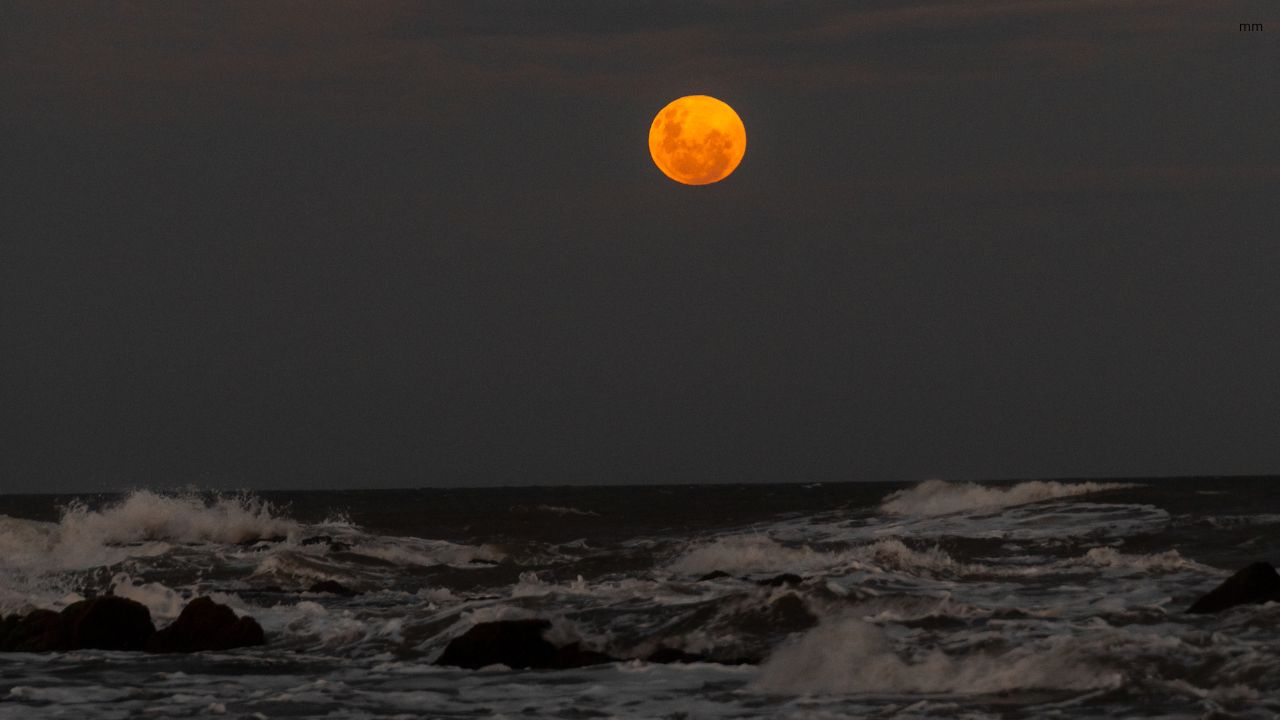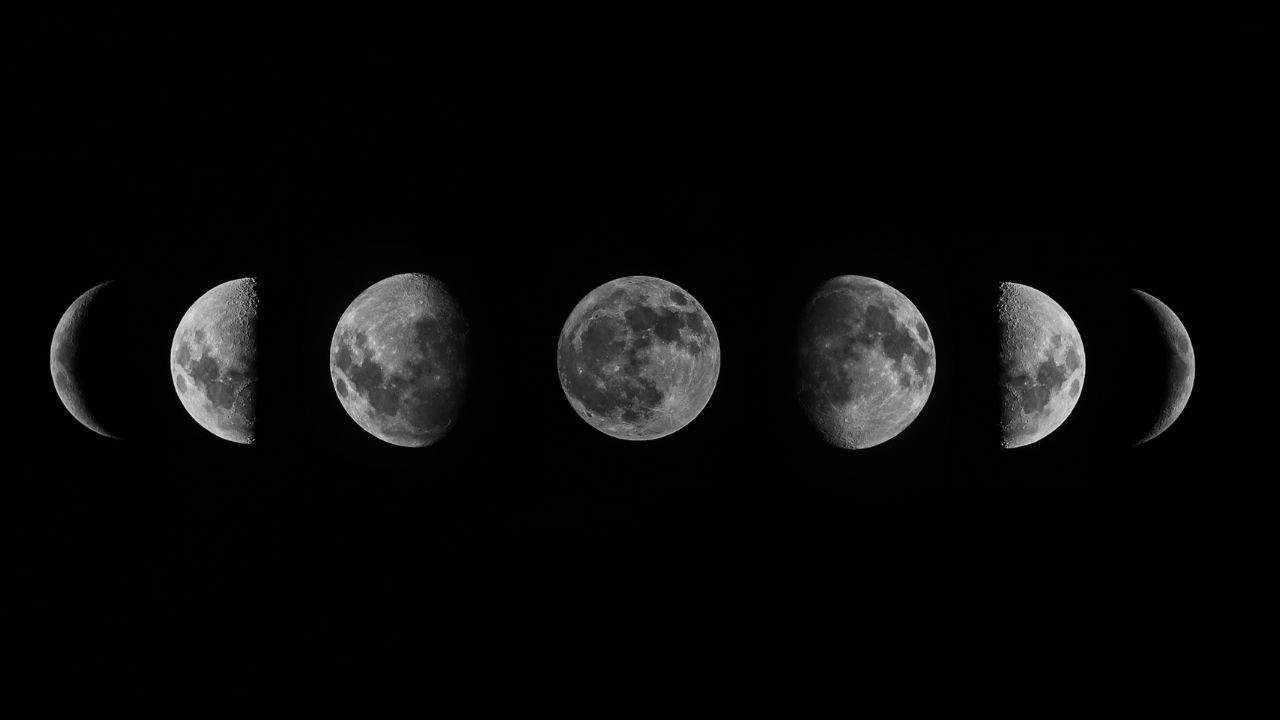
The moon's gravitational pull shapes the rhythm of Earth's tides.
The moon has fascinated humanity for millennia. From ancient myths to modern astronomy, its presence in our night sky has inspired curiosity, awe, and scientific inquiry. One of the most visible and impactful effects of the moon on Earth is its influence on ocean tides.
While many people are aware that the moon affects tides, fewer understand the science behind this phenomenon or how it connects to the moon’s phases. In this article, we’ll explore the intricate relationship between lunar phases and ocean tides, delving into gravitational forces, orbital mechanics, and the role of the sun.
Table of Contents
What Are Moon Phases?
Before we can fully grasp how the moon influences tides, it’s essential to understand the different phases of the moon. The moon does not emit its own light; instead, we see it because it reflects sunlight. As the moon orbits Earth, the portion of its illuminated surface visible from Earth changes, resulting in the various moon phases.
The lunar cycle, also known as the synodic month, lasts approximately 29.5 days. During this time, the moon goes through eight primary phases: New Moon, Waxing Crescent, First Quarter, Waxing Gibbous, Full Moon, Waning Gibbous, Last Quarter, and Waning Crescent.
The Lunar Cycle
The lunar cycle drives the timing and strength of ocean tides.
- New Moon: Moon between Earth and sun, invisible from Earth.
- Full Moon: Earth between moon and sun, fully illuminated.
These phases are not only visually striking but also play a crucial role in determining the strength and timing of ocean tides.
Interesting Fact
The lunar cycle’s 29.5-day duration is why some months feel slightly out of sync with the moon’s phases.
How Does the Moon Affect Ocean Tides?
Tides are the regular rise and fall of sea levels caused primarily by the gravitational pull of the moon and, to a lesser extent, the sun. This gravitational force creates bulges in the ocean — one on the side of Earth facing the moon and another on the opposite side.
Gravitational Pull
- Strongest on the side facing the moon
- Creates high tide bulge
- Water responds more than land
Centrifugal Effect
- High tide on opposite side
- Earth-moon orbit effect
- Balances tidal forces
Most coastal areas experience two high tides and two low tides each day, roughly 12 hours and 25 minutes apart, shifting by about 50 minutes daily due to the moon’s orbital period.
The Sun Also Plays a Role: Spring and Neap Tides
While the moon is the dominant force behind tides, the sun contributes significantly depending on its alignment with the moon and Earth.
Alignment
- Sun, moon, Earth align
- New and Full Moon phases
Effect
- Higher high tides
- Lower low tides
Frequency
- Twice monthly
- Amplified tidal range
Coastal Impact
Spring tides can lead to significant coastal flooding during storms or heavy rainfall.
During First and Last Quarter phases, the sun and moon form a right angle, reducing tidal range as their gravitational forces partially cancel each other out.
Minimal Tidal Range
Neap tides result in calmer coastal conditions with less difference between high and low tides.
Why Do Tides Vary in Height Around the World?
While the general principles of tides apply globally, the actual height and timing of tides vary widely due to several factors.
| Factor | Description | Example |
|---|---|---|
| Geography | Narrow bays amplify tides | Bay of Fundy (16m tides) |
| Resonance | Water bodies resonate with tides | Seiches in lakes |
| Weather | Storms alter sea levels | Storm surges |
The moon’s elliptical orbit also affects tides, with stronger tides at perigee and weaker ones at apogee.
The Impact of Tides on Marine Life and Human Activities
Tides are not just a fascinating astronomical phenomenon — they have profound effects on marine ecosystems and human endeavors.
Tidal movements circulate nutrients, oxygenate water, and shape intertidal zones, supporting diverse life like algae, barnacles, and shorebirds. Many marine organisms, such as corals, synchronize reproduction with tides, often during full moons.
Fishermen rely on tides to locate fish, as incoming tides bring nutrient-rich water that attracts fish, while navigators use tidal predictions to avoid hazards. Tidal energy is also an emerging renewable resource, with countries like France and the UK investing in tidal power plants.
Predicting Tides: The Science and Tools
Modern tidal predictions combine historical data, astronomical calculations, and real-time monitoring to forecast tides accurately.
| Method | Description | Application |
|---|---|---|
| Tidal Datums | Standardized reference points | Navigation charts |
| Harmonic Analysis | Breaks tides into components | Long-term forecasts |
| Digital Models | Use satellite data | Real-time predictions |
Organizations like NOAA provide detailed tidal forecasts worldwide, aiding boaters, fishermen, and coastal communities.
Climate Change and Rising Sea Levels
Rising sea levels due to climate change are altering tidal baselines, making high tides more likely to cause flooding, even on calm days. Coastal cities face increased risks during spring tides combined with storms.
Frequently Asked Questions
No, while most coastal areas experience semi-diurnal tides (two highs and two lows per day), some locations have diurnal tides (one high and one low tide per day), and others have mixed tides (two unequal high and low tides per day). These variations depend on geography and local bathymetry.
High tides occur on both the side facing the moon and the opposite side due to the combination of gravitational pull and the inertial effects of the Earth-moon system orbiting their shared center of mass.
Yes, tides can be predicted with great accuracy using harmonic analysis and historical data. Modern tools allow for precise forecasting months or even years in advance.
Tides influence fish behavior by affecting food availability and water movement. Many anglers prefer fishing during incoming or outgoing tides when fish are more active.
While tides themselves aren't necessarily getting stronger, rising sea levels can make tidal flooding more severe, especially during spring tides and storm events.
Final Thoughts
From the rhythmic ebb and flow of coastal waves to the dramatic tidal extremes of the Bay of Fundy, the moon's gravitational dance with Earth shapes our planet's oceans in profound ways.
Key Takeaways
- Moon phases drive tidal patterns through gravitational forces.
- Spring and neap tides result from sun-moon alignment.
- Tides impact marine ecosystems, navigation, and renewable energy.
By studying moon phases and tidal patterns, we gain insights into the workings of our solar system and the delicate balance of life along our shores. Whether you're a sailor, scientist, or beachgoer, the moon’s influence continues to shape our world daily.
Stay Connected with Lunar Insights
Discover Your Moon SignContinue Your Astrology Journey

🌕 How Full Moons Affect Your Daily Life
Discover the scientific and spiritual ways that full moons influence human behavior, emotions, and natural phenomena.
Read More
What Each Moon Phase Means and How to Use It?
Discover the meaning and energy of each of the 8 moon phases and learn practical ways to harness lunar energy for personal growth.
Read More
Moon Phases Explained: A Simple Guide for Beginners
Learn about the 8 moon phases and how to work with their unique energies for manifestation, self-reflection, and spiritual growth.
Read MoreCurrent Moon Phase
Find Your Moon Sign
For accurate results, use exact birth time if possible.
Most Popular Moon Signs
-
23%Moon in ScorpioDeep, intense emotional nature
-
18%Moon in PiscesSensitive and compassionate
-
15%Moon in LeoDramatic and warm-hearted
-
12%Moon in CancerNurturing and home-loving
-
10%Moon in TaurusSteady and comfort-seeking
Based on visitor calculations from MoonPhaseToday.net
